
Whether you have an RV, marine vessel, van, or off-grid property, batteries are an essential piece of your electrical system and ability to store and use power. When your factory-installed system isn’t cutting it anymore, or you’re ready to add more power and capabilities to your current system, determining which batteries are right for you can certainly be a process. With an abundance of battery chemistries, brands, and form factors available on the market today, it can be difficult to sift through the electrical jargon. To assist you with your battery-buying decision, we’ve crafted this Battle Born Batteries Buying Guide that will walk you through each step of the process. Let’s dive in!
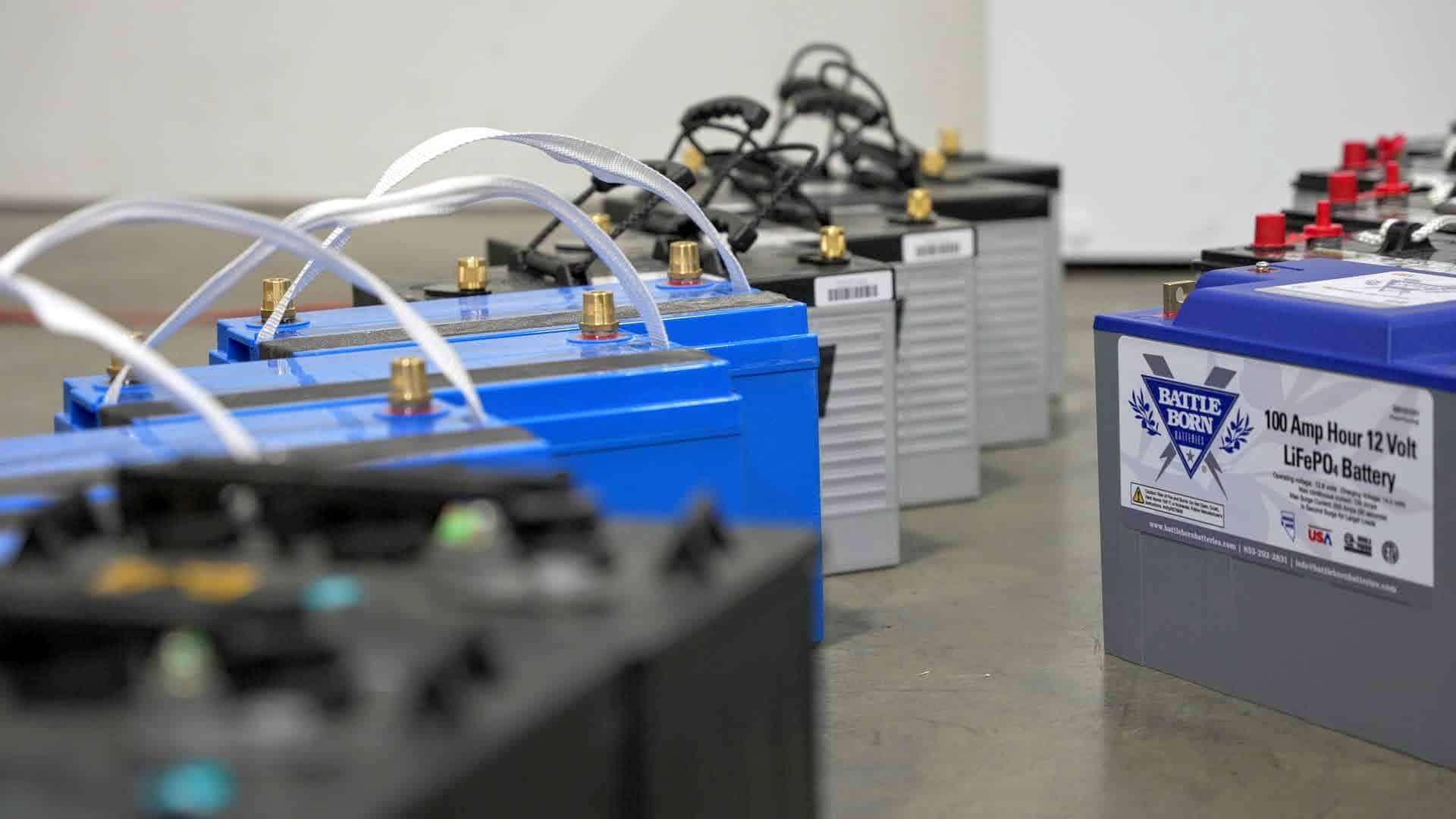
First and foremost, you need to determine which battery chemistry would be best suited to your application. When it comes to deep cycle batteries, lead acid and lithium are the primary chemistries available. Although lead acid batteries have been used for decades, the rapid advancement of lithium-ion chemistry over the last few years has led many lead acid users to make the switch. So, what is the difference between the two, and how do you determine if lead acid or lithium is what you need?
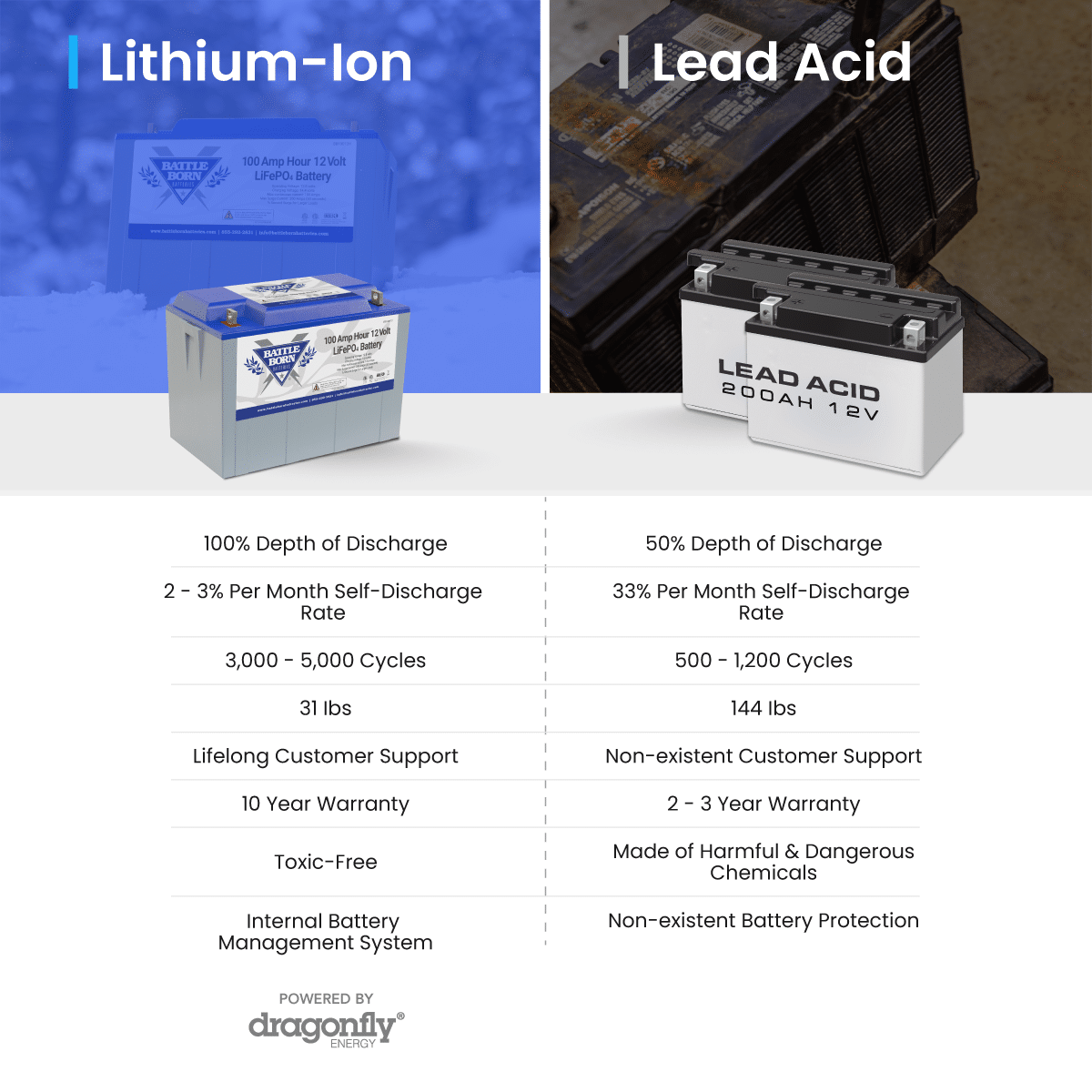
While various types of lead acid batteries have historically been the go-to deep cycle power source for years, they pale in comparison to lithium-ion batteries in every category. In addition to being heavier, less powerful, and toxic, traditional lead acid batteries require regular maintenance and monitoring. The ratio of water to liquid electrolyte in these batteries must be carefully maintained to avoid permanently damaging them. Along with ensuring the batteries never drop below a 50% state of charge, lead acid batteries are far from a “set it and forget it” system. Lithium-ion batteries are maintenance-free, meaning you can spend more time doing what you love and less time worrying about your power.
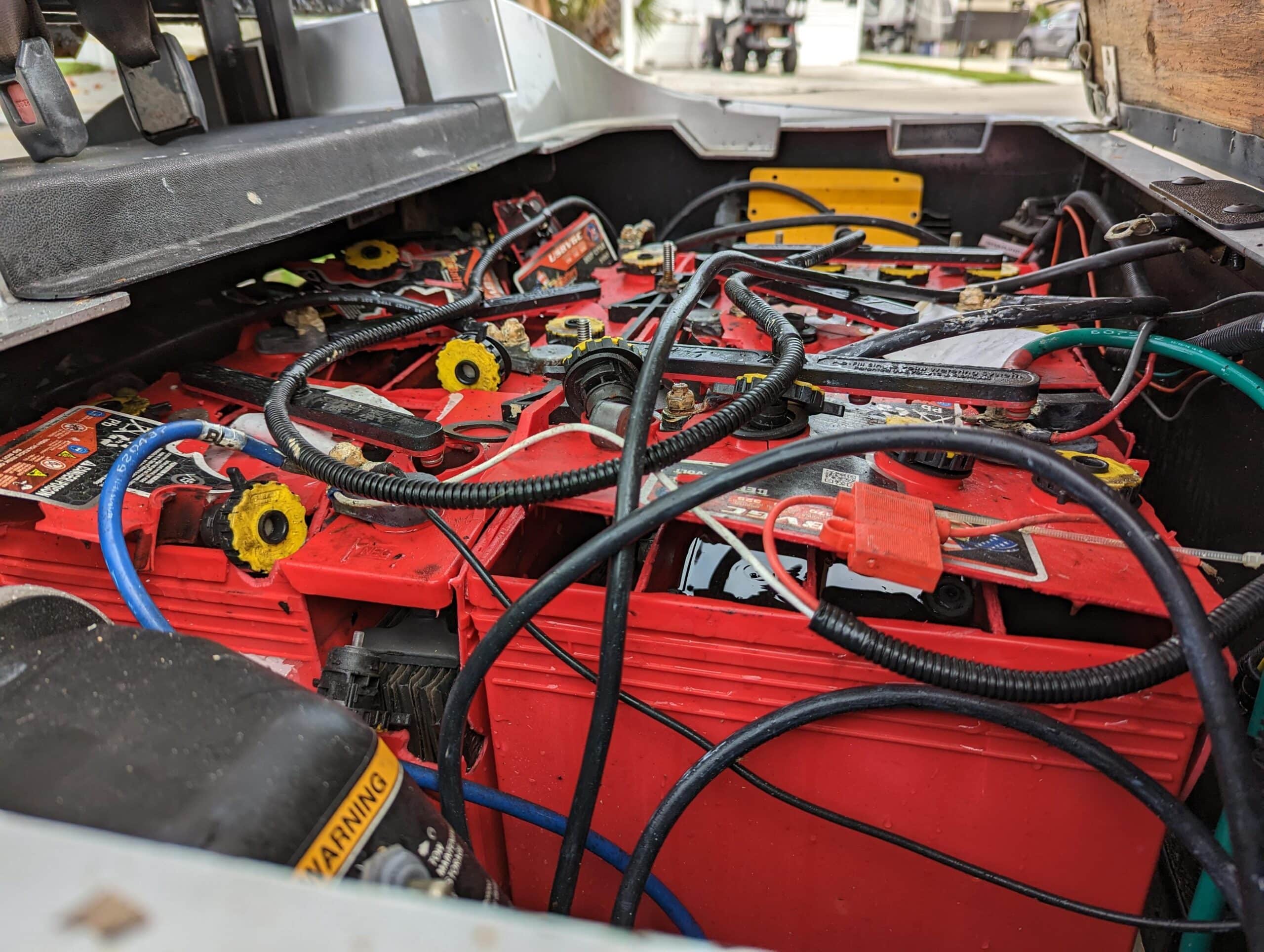
Although they come with a higher price tag that warrants its fair share of “sticker shock,” lithium deep cycle house batteries offer enhanced power, unmatched reliability, and actually a lower lifetime cost. Their higher energy density allows them to emit a longer charge in relation to their size. The increased energy density in lithium-ion allows them to offer higher energy storage per unit mass. This means lithium batteries contain 2-3 times the power in 1/5 of the weight of a traditional lead acid battery. Combined with a 100% depth of discharge, lithium batteries can power more while needing to be recharged less. Plus, let’s not forget their long-lasting capabilities, with 3,000-5,000 deep discharge cycles available offering up to a 10-times longer lifespan than lead acid.
After comparing lithium with lead acid, it’s clear that lithium batteries are the superior choice for deep cycle house power. In a market saturated with lithium batteries, the next challenge is deciding which one to purchase. Despite the term “lithium-ion battery” being used interchangeably, there are actually six different types of lithium batteries. Each type of lithium battery relies on unique active materials and chemical reactions to store energy, and has applications for which it is best suited. When it comes to deep cycle house batteries, lithium iron phosphate (LiFePO4) is the preferred choice due to its durability, long life cycle, and safety.
Once you’ve narrowed your search down to LiFePO4 batteries, another point of differentiation is the cells that make up the batteries. While many other LiFePO4 battery brands are composed of prismatic or pouch cells, Battle Born Batteries use the highest quality cylindrical cells. Cylindrical cells allow for passive cooling, more efficient distribution of internal pressure, and the ability to continue functioning if one cell malfunctions, taking the safety and reliability of Battle Born Batteries to the next level.
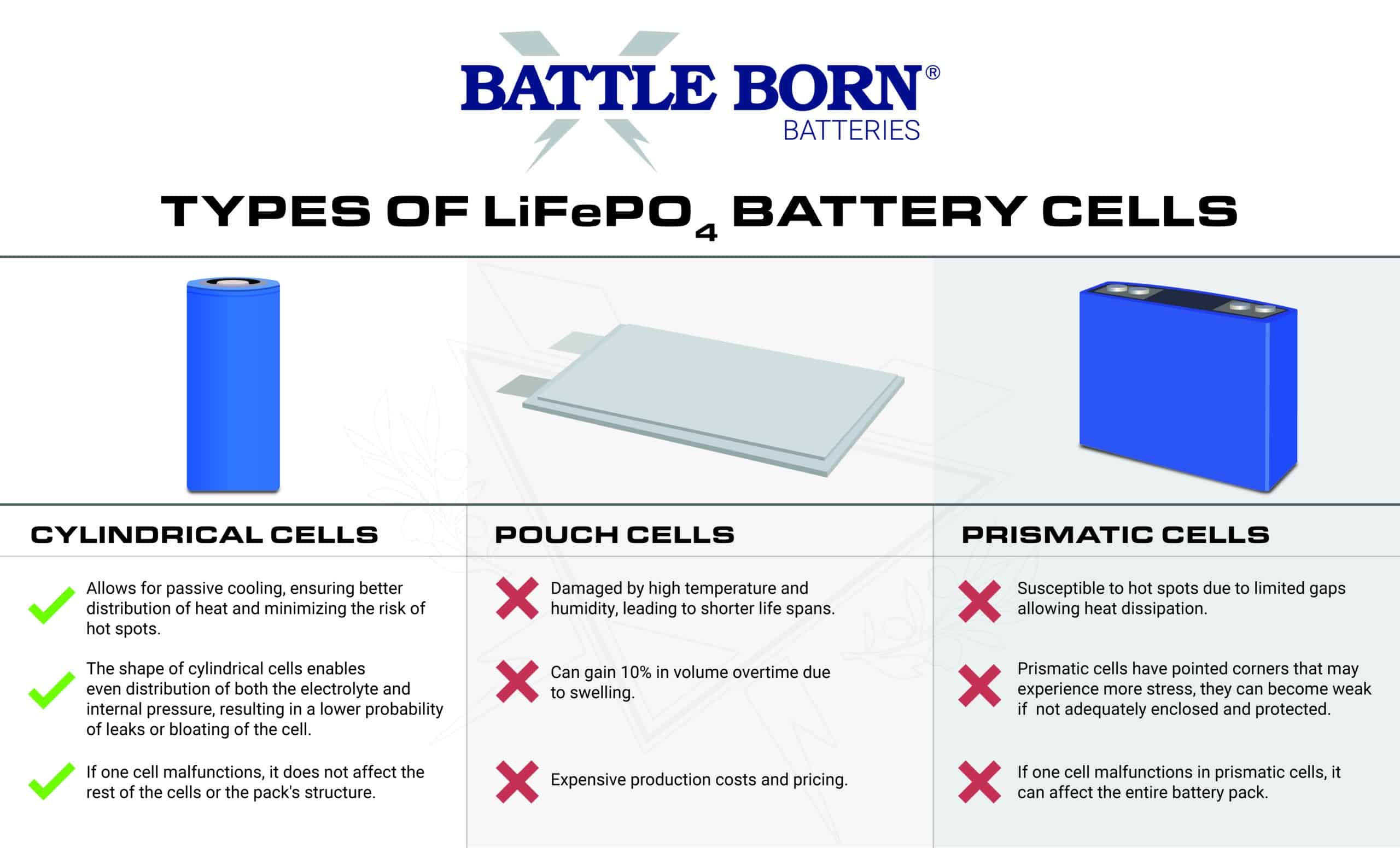
In addition to being composed of higher quality components, many still wonder what makes a premium brand, such as Battle Born Batteries, stand out above the rest. Although they come with a higher price tag, Battle Born offers unprecedented excellence that can’t be found in the myriad of imported batteries. Quality is prioritized, starting from a selection of top-quality raw materials sourced from long-standing, trusted suppliers. Then, on-site production in Reno, Nevada allows for increased quality control, ensuring each battery is crafted to meet the highest standards and pass rigorous testing.
As a premium battery brand, Battle Born Batteries prioritizes the highest quality and utmost safety but don’t just take our word for it. The following Battle Born Battery models have been stringently tested to comply with the highest safety standards, complying with UL standards, UN 38.3 certifications, CSA C22.2 standards, and IP65 ratings. Accordingly, they have been listed to the various standards they conform to, including:
To receive these listings and certifications, each of these batteries was sent to third-party labs for rigorous testing. Each listing includes a variety of tests that put the batteries in the most extreme conditions possible. Ensuring we were able to pass these tests and receive these certifications has allowed us to manufacture the safest batteries on the market.
It’s no wonder why consumers and OEMs around the world trust Battle Born Batteries to provide reliable and long-lasting power. With over 250,000 batteries in the field, nomads across the country are enjoying the benefits of premium batteries. Even some of the biggest names in the RV industry, including Airstream, Keystone, Tiffin, Forest River, Ember, Coachmen, ATC, and nuCamp, have upped their off-grid power offerings with Battle Born Batteries.
Our product offering doesn’t end with the industry’s best lithium-ion batteries. Taking a comprehensive approach to complete system integration, our team provides you with everything that you need for your ideal power system. Battle Born Batteries’ deeply knowledgeable Technical Sales Team is educated in the most current technology and is a short phone call away to start discussing your specific energy needs. Based at our headquarters in Reno, NV, our team is ready to help you achieve energy independence with expertise and resources you can trust.
After deciding which chemistry and battery brand is right for you, the next challenge is determining the size of the battery that you need. This will vary depending on the space you have available and your power requirements. Battle Born Batteries offers a wide range of battery sizes and form factors to ensure we have one that will suit your application.
The most common voltage for deep-cycle batteries is 12 volts. This allows for wiring flexibility as 12V batteries can be wired in series up to 48V to accommodate larger power needs.

The battery that started it all. Our flagship 100 Ah 12V deep cycle battery is a drop-in replacement for group 27 and group 31 lead-acid batteries. With similar size dimensions, this battery makes it easy to upgrade your power system quickly and seamlessly.
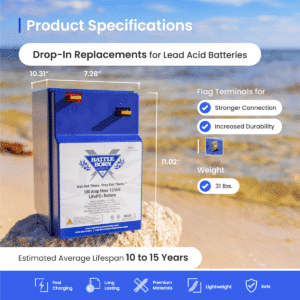
We also offer a 100Ah 12V GC2 deep-cycle battery. The Battle Born GC2 battery is a drop-in replacement for lead-acid golf cart batteries. In the same physical space as the 6V lead acid version, these 12V batteries offer more power in half the weight and space. Additionally, their unique terminal placement allows further flexibility for those looking for a 100Ah battery in a space constraint that doesn’t suit our flagship model.
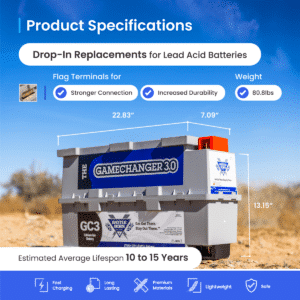
Battle Born Batteries is changing the game with this 12V 270Ah LiFePO4 deep cycle battery. The Gamechanger 3.0 (GC3) offers a completely unique form factor that changes the way batteries can be placed inside RVs. Rather than adhering to a traditional battery size that needs to fit in a battery box to allow for ventilation from off-gassing, we have created a battery that can be placed anywhere.

Lastly, we offer two 50 Ah batteries and one 75 Ah option. The first is our 24V 50Ah LiFePO4 deep cycle battery, which is also a drop-in replacement for group 27 and 31 batteries. This battery is great for systems needing a higher voltage and provides different configuration options to suit a variety of applications. Additionally, two Group 24 batteries, the 12V 50Ah group 24 battery and the 12V 75Ah group 24 battery, both great for smaller applications that require less power. Weighing in at less than 18 pounds, these batteries can be easily transported for a variety of mobile applications.

For those seeking a plug-and-play solution, the Battle Born Batteries’ Lithium Power Pack Series is the perfect solution. This ultimate all-in-one power solution for RVs, vans, and other mobile, off-grid, and industrial applications is pre-wired and ready-to-go systems make the upgrade to lithium simple, requiring limited installation into your RV or other applications.
Once you’ve determined which battery size is right for your application, the next step is figuring out how much power you need. Before beginning this process, it’s essential to think through a typical day off the grid in your rig, marine vessel, or home. Think about your essential electronics and non-negotiables for power. Then, based on their power requirements and how long you want to run them, you can determine exactly how much power you need.
The Battle Born Batteries Lithium Battery Calculator is here to help you determine the amp hours needed to run your must-haves in a lithium power system. First, answer some simple questions about your application, 30A or 50A service type, and voltage. Then, determine your system loads—including any electronics you want to use, like a coffee pot, refrigerator, air conditioner, hair dryer, microwave, or TV. After your calculation is complete, you will receive shoppable recommendations based on the exact number of amp hours the calculator determined your system would need. This will allow you to decide which battery size and how many you will need.
Before making a purchase, the next step is deciding if your Battle Born Batteries need any special capabilities. While the standard batteries will work great for many applications, there are special features that can be beneficial for certain use cases.
Lithium-ion batteries handle cold temperatures more effectively than other battery types. That said, pushing them to the extreme can compromise the battery and reduce its ability to store and release energy. If it’s likely your adventures will take you into sub-freezing temperatures, utilizing internally Heated Battle Born Batteries, may be your best option.
Although our batteries can be discharged in temperatures down to -4°F, their BMS won’t allow them to recharge if their internal temperature is below 25°F. In this case, our internally heated batteries will automatically kick on to ensure the internal temperature remains at 35°F. This allows you to have reliable power no matter what weather you face.
Additionally, Battle Born Batteries equipped with Dragonfly IntelLigence give users further monitoring capabilities. These smart batteries offer adaptive charging, real-time monitoring, system integration, enhanced protection, and new safety features. Through the Dragonfly Energy Mobile App and Wireless Mesh Network connectivity, customers can harness the full potential of their lithium-ion batteries, enjoying unprecedented control and insight into their energy systems.
While batteries are an integral part of an electrical system, it’s essential to incorporate a way to charge them. Depending on your application, there are a variety of charging options available.
Regardless of whether you’re hitting the road or spending time on the water, having the option to charge using shore power or a generator never hurts. Whether you plan to use hookups at an RV park or boat dock or recharge at home, shower power is a sure way to quickly recharge your batteries. While other charging methods can be intermittent and complicated, utilizing shore power or a generator is simply reliant on available hookups or having enough fuel.
Even though having this charging option is essential, it should be coupled with another charging source if you want to spend extended time off the grid. Being solely tied to hookups or a noisy, gas-guzzling generator will limit your boondocking capabilities.
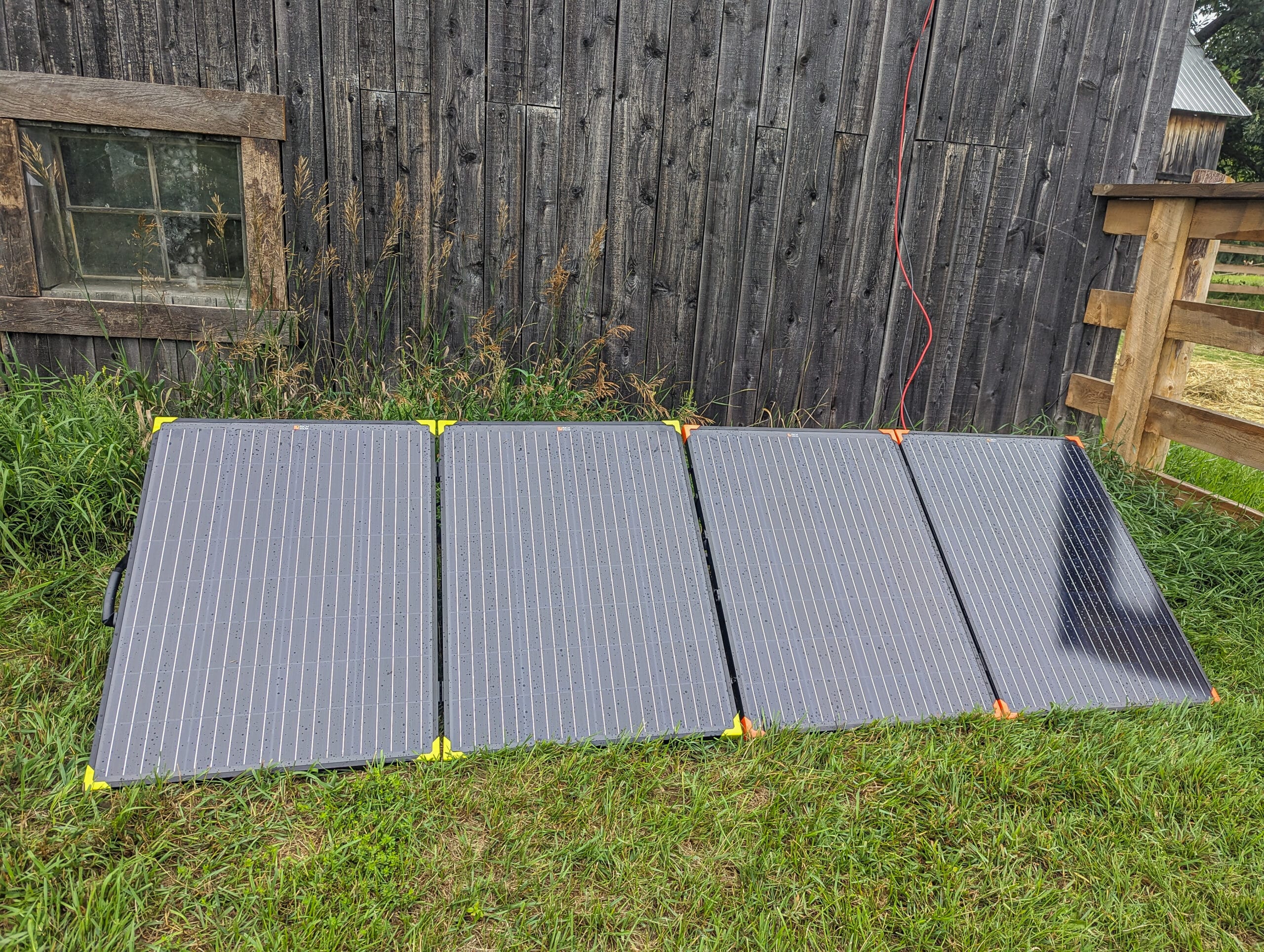
For those looking to maximize their time off-grid, solar power is a great charging source. One of our most reliable and abundant energy resources is the sun, which presents an excellent advantage for solar energy. Capitalizing on the renewable energy of the sun, solar panels take in power that moves through a solar charge controller and recharges your batteries. While there are some disadvantages to intermittent solar power at night or on cloudy days, supplementing with more wattage can increase the amount of power your batteries receive.
In addition to being great for RVers and Boaters who spend extended amounts of time away from electrical hookups, solar power is great for residential off-grid systems. These stationary off-grid homes don’t have weight or space restrictions, allowing you to have a large solar array to keep your batteries powered. Not only is solar power easy to generate off-grid, but it is also a clean, green energy source that helps you pursue a more sustainable lifestyle.
Finally, you can recharge your batteries using your vehicle’s alternator. This can be especially helpful for van, overland, and marine applications. With this method, a connection to your vehicle’s alternator, through a regulation device, your house batteries can charge as you drive. Using alternator charging can eliminate the stress that comes from solely relying on solar power. It allows you to simply go for a drive to pull the charge of your batteries up on cloudy or particularly dark days.
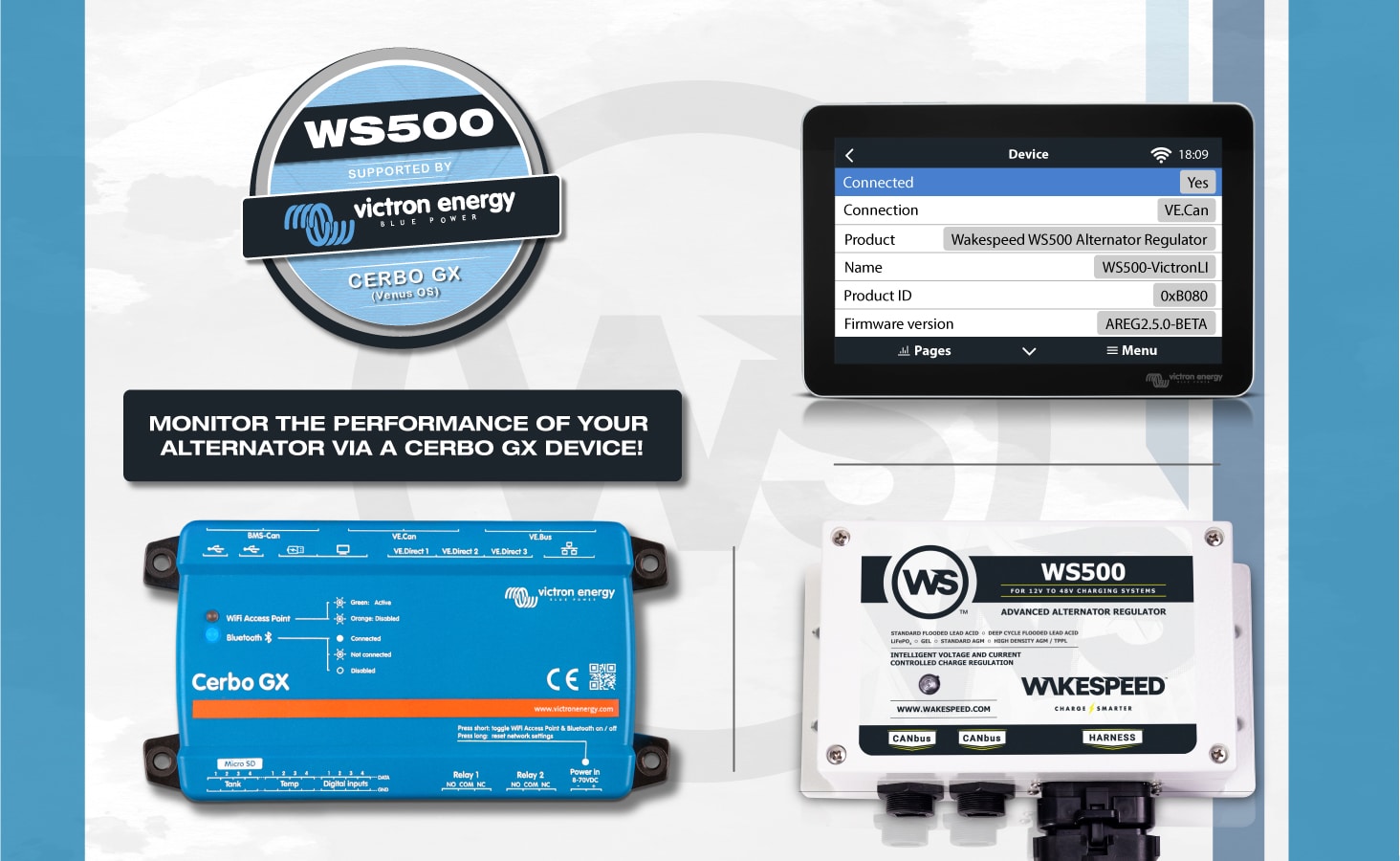
The one caveat to this method is ensuring your system is properly designed to avoid damaging your alternator or rig electronics. In order to properly regulate the charge going from the alternator to your batteries you either need a DC-to-DC charger or an alternator regulator. Using a DC-to-C charger, your alternator charges your starting battery, which then charges your house batteries. Alternatively, an advanced alternator regulator like the Wakespeed WS500. This device has a unique ability to regulate based on voltage, current, and alternator temperature and ensure your batteries are only receiving a safe charge.
After investing extensive amounts of time, energy, and money into designing the perfect off-grid power system, you want to ensure it will last for years to come. With varying battery chemistry, their life cycles can vary widely. While some last for decades, others need to be replaced every few years. So, how long do lithium deep-cycle batteries really last?
One of the greatest benefits of LiFePO4 deep cycle batteries is their ability to endure multiple cycles of charging and discharging without experiencing a significant reduction in their capacity. Battle Born Batteries are designed for long-term use and can last up to 10 times longer than lead acid batteries, with 3,000-5,000 deep discharge cycles.
In addition to their long life expectancy, premium battery brands come with sufficient warranties to ensure you’ll always have reliable power. Battle Born Batteries have a ten-year warranty, keeping you on the road far longer than traditional lead acid batteries. This extended warranty guarantees at least ten years of reliable power, making them a more economically viable choice in the long run.
If you’re ready to stop wasting your time on the road with unreliable power, we’re ready to help you upgrade with the premium power of Battle Born Batteries. Our battery bank calculator is a great place to get started on building your lithium power system. Once you’ve calculated your power needs, you can have your results sent directly to one of our technical sales specialists who would be happy to help you design your dream system. They can be reached at (855) 292-2831 (M-F 8:00 am – 4:30 pm (PST)). Then, when you have your components, our list of certified dealers and installers would love to help you install your system. These professionals will have your system up and running, and you’ll be out on the road in no time!
Copyright © 2024 Dragonfly Energy. All rights reserved. Dragonfly Energy collects personal information for its internal use. We do not share customer information with any third parties.
2 thoughts on “Battle Born Lithium Batteries Buying Guide | Everything You Need to Know to Upgrade Your Power”
I took the whole solar system from a house that was grid tied. I want to change it to off grid. Can you give me advice on how and what i need?
Hi! Our technical sales team would love to help you design an off grid system! You can reach them (855) 292-2831 (M-F 8:00am – 4:30pm (PST)).